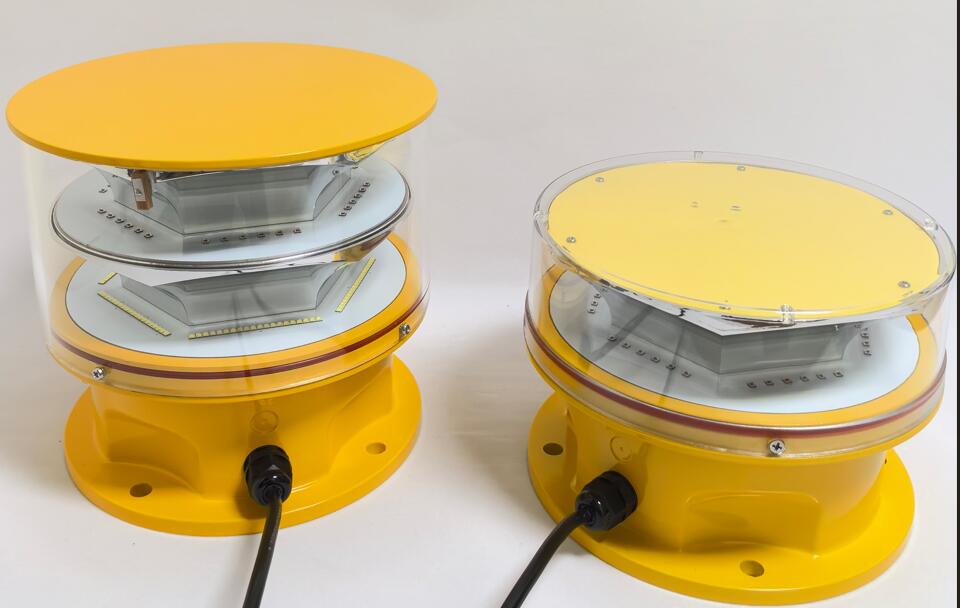Posted: 2025-03-27
Lampu obstruction lights, commonly known as obstruction lighting, play a critical role in aviation and infrastructure safety. These specialized lights are installed on tall structures—such as buildings, towers, wind turbines, and bridges—to warn pilots of potential obstacles, especially during low visibility conditions. This article explores the importance, types, regulations, and technological advancements of lampu obstruction lights, emphasizing their indispensable role in modern aviation safety.
Why Lampu Obstruction Lights Are Vital
Air traffic has increased exponentially over the years, making obstacle visibility a top priority. Lampu obstruction lights serve as visual markers, ensuring that pilots can identify and avoid tall structures, particularly at night or in adverse weather conditions like fog, rain, or snow.
Without these lights, the risk of collisions would rise significantly, endangering lives and causing costly damages. The International Civil Aviation Organization (ICAO) and other regulatory bodies mandate the use of lampu obstruction lights on structures exceeding certain heights to maintain safe airspace navigation.
Types of Lampu Obstruction Lights
Different structures require different types of obstruction lighting based on their height, location, and surrounding environment. The most common types include:
1. Low-Intensity Obstruction Lights
Used for structures under 45 meters (148 feet).
Typically red in color and steady-burning.
Common on small buildings, cranes, and telecommunication masts.
2. Medium-Intensity Obstruction Lights
Required for structures between 45 and 150 meters (148–492 feet).

Available in red or white, often flashing to enhance visibility.
Used on taller buildings, power plants, and wind farms.
3. High-Intensity Obstruction Lights
Mandatory for structures exceeding 150 meters (492 feet).
Emit bright white flashes, visible from long distances.
Installed on skyscrapers, broadcast towers, and large industrial structures.
4. Dual Lighting Systems
Combine red steady-burning lights with white strobes for maximum visibility.
Often used in areas with high air traffic or complex terrain.
Regulations and Standards
To ensure uniformity and effectiveness, lampu obstruction lights must comply with international and national aviation safety standards. Key regulatory bodies include:
ICAO (International Civil Aviation Organization) – Sets global guidelines for obstruction lighting.
FAA (Federal Aviation Administration, USA) – Regulates lighting requirements in the U.S.
EASA (European Union Aviation Safety Agency) – Oversees aviation safety standards in Europe.
These regulations specify light intensity, color, flash patterns, and placement to ensure optimal visibility for pilots.
Technological Advancements in Lampu Obstruction Lights
With advancements in LED technology and automation, modern lampu obstruction lights have become more energy-efficient, durable, and reliable. Some key innovations include:
LED Lighting – Consumes less power, lasts longer, and provides brighter illumination than traditional incandescent bulbs.
Solar-Powered Systems – Ideal for remote locations where electrical infrastructure is unavailable.
Smart Monitoring Systems – Use sensors and IoT (Internet of Things) to detect faults and automatically alert maintenance teams.
Aircraft Detection Lighting Systems (ADLS) – Activates lights only when an aircraft is nearby, reducing light pollution and energy consumption.
Challenges and Future Trends
Despite their effectiveness, lampu obstruction lights face challenges such as:
Light Pollution – Excessive brightness can disturb nearby residents, leading to complaints.
Maintenance Issues – Harsh weather conditions can damage lights, requiring frequent inspections.
Regulatory Variations – Different countries have different standards, complicating global compliance.
| lampu obstruction light |
Future trends focus on smarter, more adaptive lighting solutions, including AI-driven systems that adjust brightness based on real-time aviation traffic and weather conditions.
Lampu obstruction lights are a cornerstone of aviation safety, preventing collisions and ensuring smooth air traffic operations. As technology evolves, these systems will become even more efficient and environmentally friendly. Compliance with international standards, coupled with ongoing innovation, will further enhance their role in safeguarding both aircraft and infrastructure.
For aviation authorities, engineers, and urban planners, investing in high-quality lampu obstruction lights is not just a regulatory requirement—it’s a commitment to safety and progress.